Author: Will Lovell
Widely viewed as an energizing morning beverage by people the world over, coffee has found its way into a number of consumables, from candy and ice cream to soda and, of course, beer. Whereas barley is a cereal grain that’s a member of the grass family, coffee beans are the seed of a specific type of stone fruit, but they get roasted in similar ways, which may explain their complimentary relationship.
There are a number of methods for imparting coffee flavor to beer, one of which involves adding whole coffee beans to the fermented beer the same way one might add dry hops, a technique some refer to as “dry beaning.” When employing this approach, it’s commonly recommended to leave the beer in contact with the coffee beans for 2 to 4 days before packaging, with longer contact times purportedly leading to unpleasant off-flavors and astringency.
While I typically add cold brew concentrate to my coffee beers at the point of packaging packaging, I find the idea of dry beaning intriguing, as some have reported it leads to a rather strong overall coffee punch. When putting a recipe together for a coffee Blonde Ale recently, I began to wonder what impact longer dry beaning times might have and designed an xBmt to test it out for myself.
| PURPOSE |
To evaluate the differences between a Blonde Ale that was dry beaned for 3 days and one that was dry beaned for 10 days.
| METHODS |
While coffee is often used in darker beer styles, I went with a simple Blonde Ale recipe for this xBmt in hopes of accentuating any differences.
Fuzzy Jitters
Recipe Details
| Batch Size | Boil Time | IBU | SRM | Est. OG | Est. FG | ABV |
|---|---|---|---|---|---|---|
| 5.5 gal | 60 min | 27.2 | 6.9 SRM | 1.05 | 1.012 | 4.99 % |
| Actuals | 1.05 | 1.012 | 4.99 % | |||
Fermentables
| Name | Amount | % |
|---|---|---|
| Wildfire Pale Malt | 10 lbs | 85.11 |
| Munich Malt | 1.5 lbs | 12.77 |
| Victory Malt (biscuit) | 4 oz | 2.13 |
Hops
| Name | Amount | Time | Use | Form | Alpha % |
|---|---|---|---|---|---|
| Northern Brewer | 22 g | 60 min | Boil | Pellet | 10.2 |
Yeast
| Name | Lab | Attenuation | Temperature |
|---|---|---|---|
| Flagship (A07) | Imperial Yeast | 77% | 60.1°F - 72°F |
Notes
| Water Profile: Ca 42 | Mg 0 | Na 0 | SO4 56 | Cl 33 |
Download
| Download this recipe's BeerXML file |
The night prior to brewing, I collected 2 identical volumes of RO water before measuring out and milling the grain for each batch.
After waking up to properly heated water the next morning, I incorporated the grains then checked to ensure both mashes were at my desired temperature.
During the mash rests, I prepared the kettle hop additions.
Once the 60 minute mashes were complete, I removed the grains and proceeded to boil each batch for 60 minutes, adding hops at the times stated in the recipe.
When the boils were complete, I quickly chilled the worts then transferred equal volumes from each batch to separate sanitized Kegmenters.
A refractometer reading showed the worts were at my target OG.
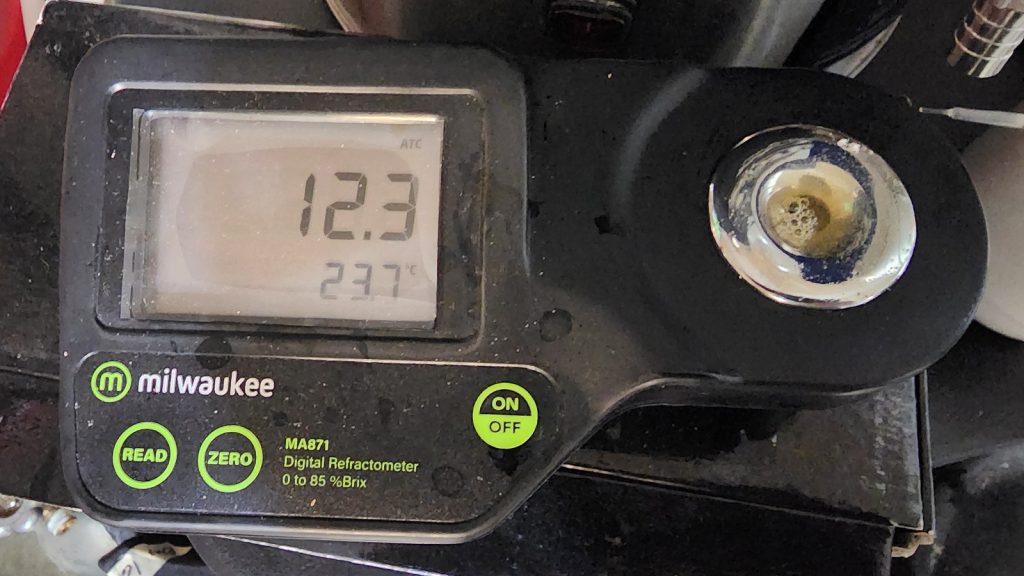
I then pitched a pouch of Imperial Yeast A07 Flagship into each batch.
The beers were left to ferment at 66°F/18°C for a week before I took hydrometer measurements confirming FG was reached.
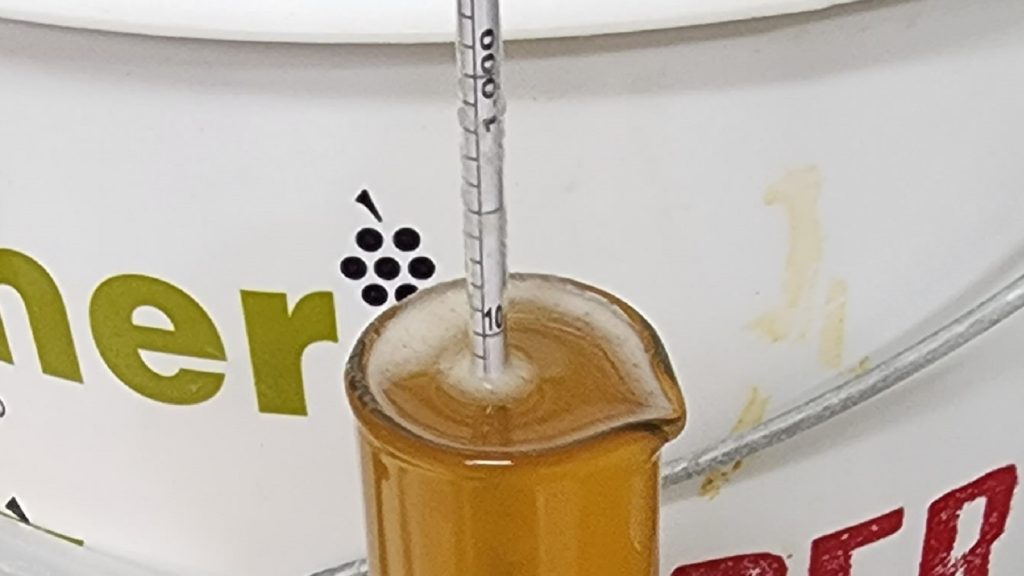
With fermentation complete, I added 90 grams of coffee beans to the first fermenter then waited 7 days before adding same amount of coffee to the second fermenter.
After 3 more days, I pressure-transferred the beers to CO2 purged kegs that were placed in my kegerator and burst carbonated overnight before the gas was reduced to serving pressure. Following a 2 week conditioning period, the beers were ready to serve to tasters.
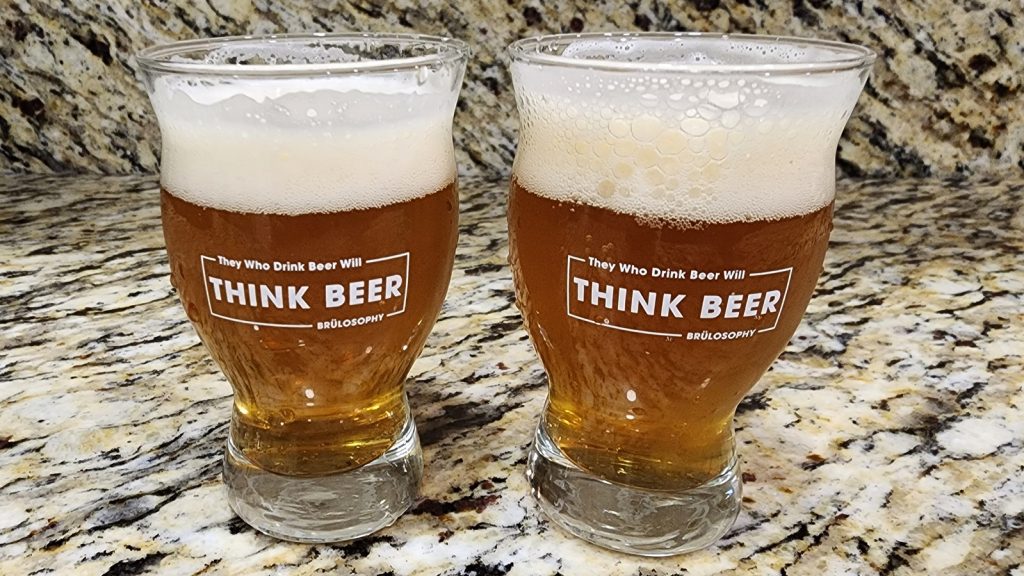
| RESULTS |
Shout-out to the San Antonio Cerveceros for letting me collect data at a recent club meeting! A total of 21 people of varying levels of experience participated in this xBmt. Each participant was served 2 samples of the beer dry beaned for 3 days and 1 sample of the beer dry beaned for 10 days in different colored opaque cups then asked to identify the unique sample. While 12 tasters (p<0.05) would have had to accurately identify the unique sample in order to reach statistical significance, only 9 did (p=0.24), indicating participants in this xBmt were unable to reliably distinguish a Blonde Ale that was dry beaned for 3 days from one that was dry beaned for 10 days.
My Impressions: Out of the 5 semi-blind triangle tests I attempted, I correctly identified the odd-beer-out 3 times, which isn’t terribly consistent. I felt the coffee flavor and aroma in both beers was pretty intense, which made telling them apart difficult.
| DISCUSSION |
Coffee has become a rather commonplace brewing ingredients, used to enhance the roast flavors in dark beers or contribute something unique to paler styles. One method for adding coffee is dry beaning, which involves adding whole beans to the fermented beer and leaving the in contact for a set amount of time. Countering claims that extended contact times lead to perceptible off-flavors, tasters in this xBmt were unable to reliably distinguish a Blonde Ale that was dry beaned for 3 days from one that was dry beaned for 10 days.
When considering explanations for these results, it’s possible the pungency of coffee character in this beer hid any differences caused by contact time, which may very well be a function of the dry beaning method. Moreover, some evidence suggests unpleasant green pepper flavors stem from using beans that are under-roasted, which the coffee I used was not, which would further support the idea that contact time may not have as big of an impact as some believe.
I’ve made a handful of coffee beers where I added cold crew concentrate at packaging, and in my opinion, the dry beaning approach contributed a much strong coffee character. While I enjoyed drinking these xBmt beers, I personally prefer the more nuanced coffee flavor I get from my standard method, but I look forward to exploring the impact different approaches to adding coffee to beer have. Based on these results, I certainly wouldn’t worry if I had to leave a batch of beer in contact with coffee beans a little longer than planned.
If you have any thoughts about this xBmt, please do not hesitate to share in the comments section below!
Support Brülosophy In Style!
All designs are available in various colors and sizes on Amazon!
Follow Brülosophy on:
FACEBOOK | TWITTER | INSTAGRAM
If you enjoy this stuff and feel compelled to support Brulosophy.com, please check out the Support page for details on how you can very easily do so. Thanks!


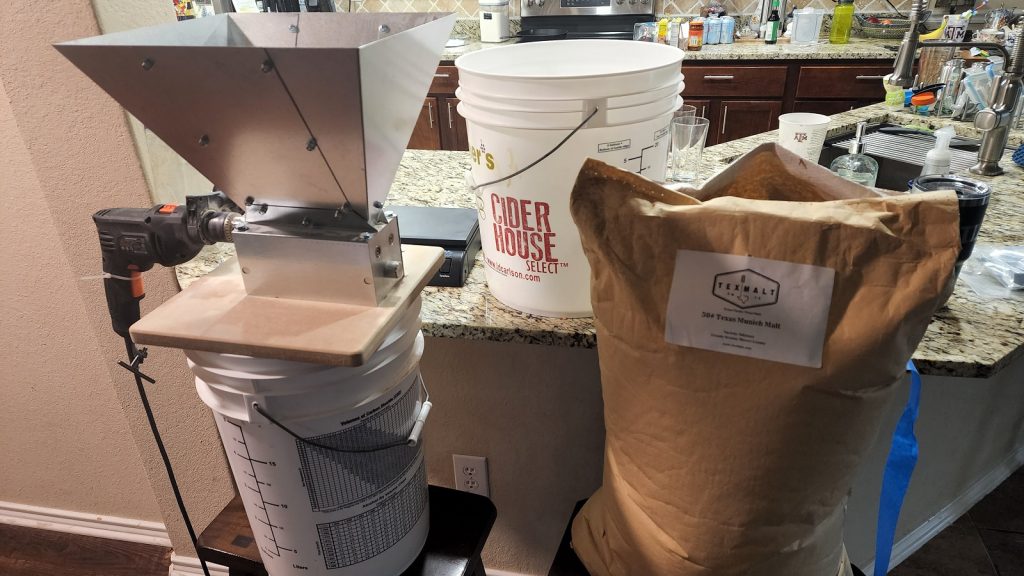
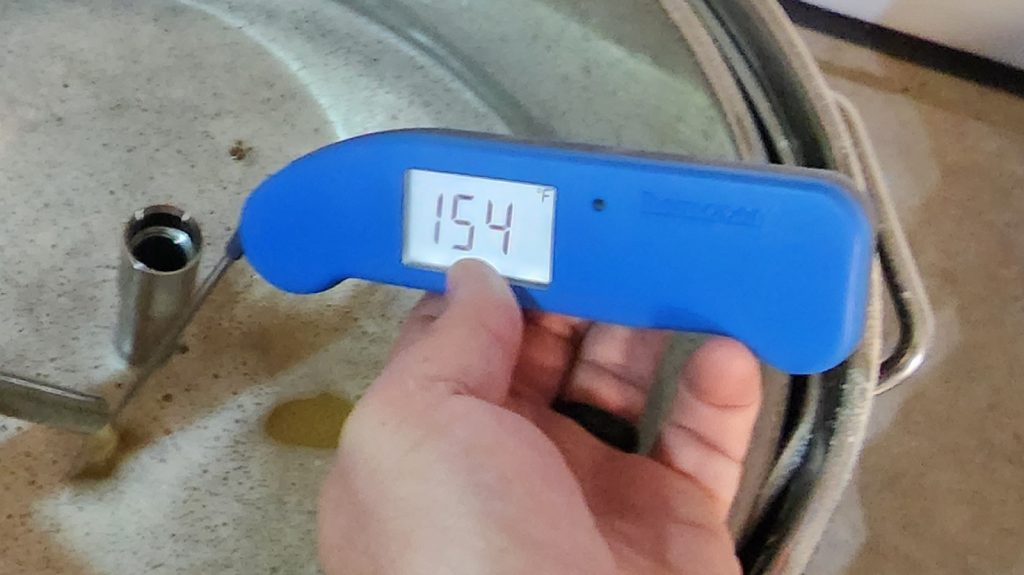

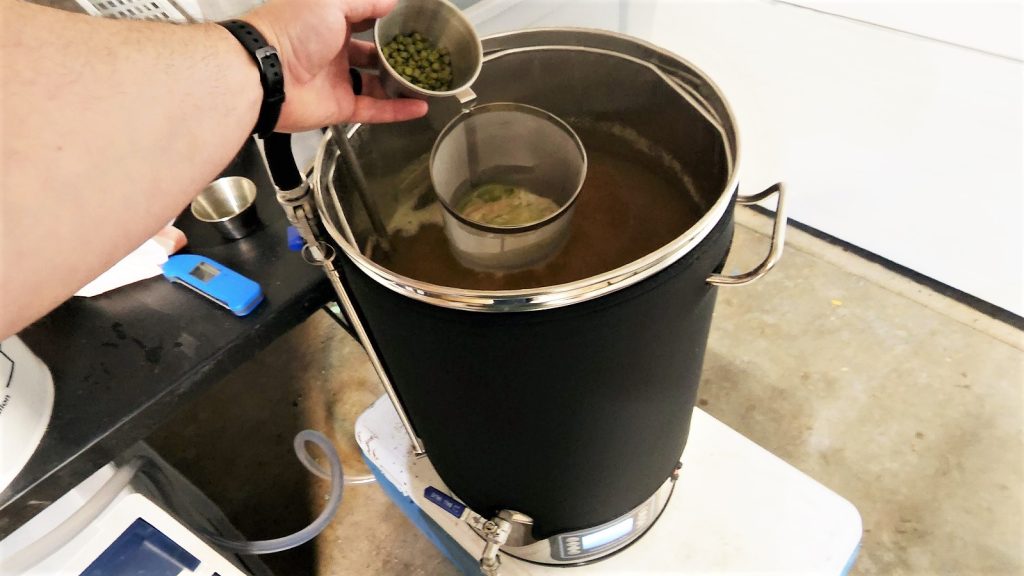
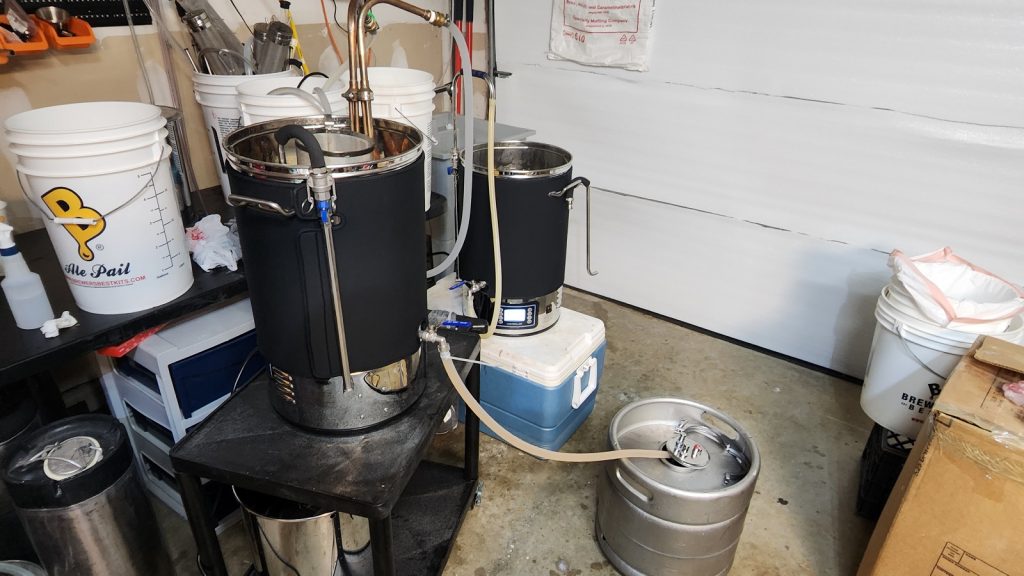
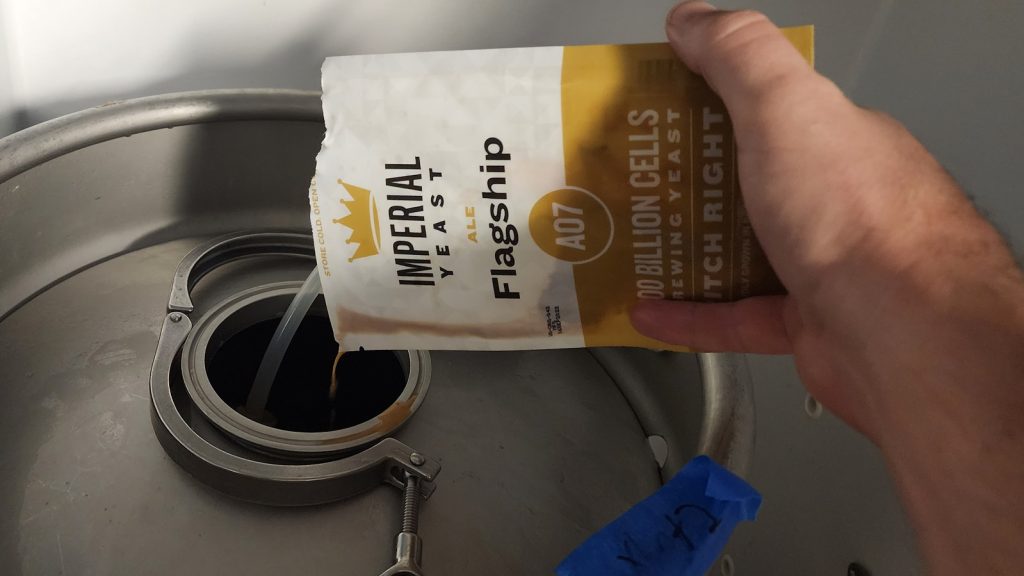
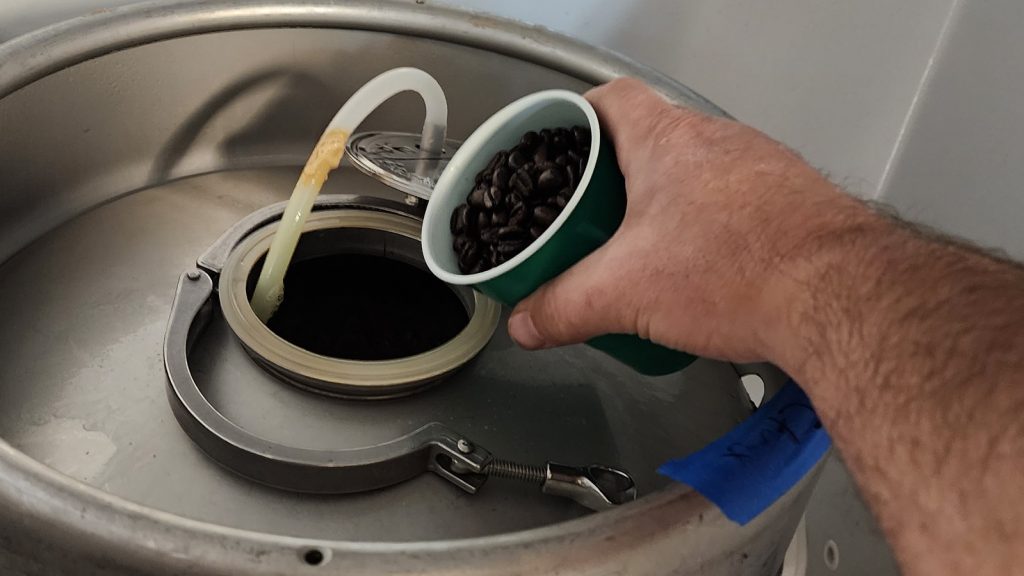











5 thoughts on “exBEERiment | Impact Post-Fermentation Contact Time With Coffee Beans Has On An American Blonde Ale”
Even 3 days is still double what I usually do. If I go past 36 hours of contact with the beans, the beer starts to lose that delicate floral character that I love in coffee and becomes more diner coffee-like. That might be some people’s cup of… coffee, but it ain’t mine. That said, you can modulate the rate of extraction somewhat by raising or lowering the temperature. With beer closer to freezing you can be a little more flexible with timing.
Thanks for the experiment. Strength of coffee is a personal taste, some people like it stronger than others.
For what its worth, I keep a coffee white stout as one of my regular rotation taps. Folks really like it so I keep it always available. It’s my wife’s favorite beer, so, of course. Here’s the “dry bean” process I landed on: 10 ounces of medium roasted, high quality beans from a local craft roastery, which I coarsely grind and place in a muslin bag. I drop it in the fermenter (5 gallons) once FG is reached. The bag is removed after 36 hours. I got to 36 hours by frequently sampling the first two times I made this (every few hours after the first 24). Pulled the beans when I liked the coffee flavor/strength. 36 hours works every time now.
Again, thanks for all the great work.
This is yet another example of frustratingly poor experiment design, which is far too common for this channel, unfortunately. You wrote, “When employing this approach, it’s commonly recommended to leave the beer in contact with the coffee beans for 2 to 4 days before packaging.” I don’t believe this, unless you are intentionally searching the internets for the most poorly informed opinions.
The baseline standard of dry beaning with freshly roasted beans for 24 hours has been firmly established by experiments run by Michael Tonsmiere and presented at Homebrew Con by Tonsmiere, et al. You can also taste the result of this protocol in a widely-available commercial example (Modern Times Black House) if you have any doubts.
The brulosophy experiment should have been designed as 24 hours vs 72 hours (or 120 hours).
Obviously, if you overpower a beer with coffee as a result of poorly-conducted research, then you just get a failed and useless experiment. This is like trying to experimentally determine the non-lethal dose of a substance by administering 3x the known lethal dose and 10x the lethal dose.
Sigh.
I’m sure you’re a blast at parties but seems to me like the article is really pointing at extended bean time and off flavors – “Countering claims that extended contact times lead to perceptible off-flavors, tasters in this xBmt were unable to reliably distinguish a Blonde Ale that was dry beaned for 3 days from one that was dry beaned for 10 days”. I’m sure your comment is very helpful though…..sigh
Thanks for running this trial. I have a true White Stout (not a blonde) I’ve been chasing and I had plans to do some split-batch tests focusing on beaning rates. I forgot about the contact time variable. Of course, I can’t taste your brews to judge the intensity of the coffee notes, but I’m encouraged to see you thought only 90g/5gal was sufficient. I previously used 1#/5gal of a local breakfast roast and it was spot on, but I wanted to know if I was just wasting beans. From your test here, it appears so. (I never thought to dry them out after and then grind and brew, maybe next time!) I also appreciate the comment about sampling after 24 hours. I think that’s the way to go to judge your own idea of optimum effect. At least I won’t be worried about extended contact time if I do let it sit too long.